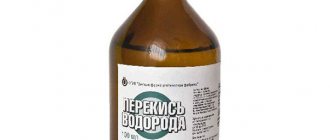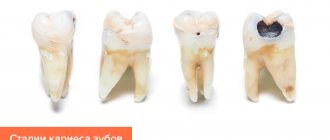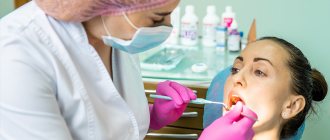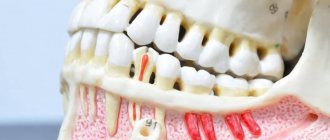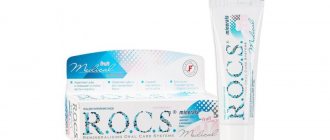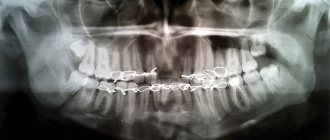Bone health is extremely important for full functioning. Together with joints and muscles, bones give a person support, movement, and strength. The skull, spine and rib cage protect the internal organs from physical influences. But their functions are not limited to this. It is also a storage facility for phosphorus and calcium. Finally, the bone marrow is the main organ of the hematopoietic system. With age, bones lose their strength. From about 32-34 years of age, irreversible processes begin in which resorption (destruction) proceeds faster than tissue restoration. The human task is to slow them down and keep the musculoskeletal system healthy and strong for as long as possible. In this material we will tell you what factors contribute to strengthening bone tissue.
What factors influence bone formation?
Primary ossification occurs in the third month of intrauterine development. This process is completely completed by the age of 25. In parallel, active bone growth occurs. Although bone tissue is formed throughout life, over time this process slows down. On average, a full cycle of remodeling (restructuring) takes 10 years. The main indicator of the quality of osteogenesis is bone tissue density, which is influenced by: • The amount of minerals: calcium, phosphorus, magnesium, silicon. • Presence of vitamins (C, D and K) in the body. • Supply of substances that help the absorption of minerals and vitamins. • Elimination of substances that promote calcium loss.
Genetic factors cannot be ruled out. If the gene responsible for encoding the calcitriol (1,25-dihydroxyvitamin D) receptor is mutated, bone density will be low even with sufficient vitamin D intake.
Calcium value
This mineral is key to maintaining normal bone density. The range of its actions is quite wide: • participates in the formation of insulin-like growth factor-1; • activates the division of osteoblasts (young bone cells); • slows down the rate of remodeling; • regulates phosphorus metabolism.
At different periods of development, its preferred sources differ. A person receives the first portions from the placenta, then the mineral is supplied through breast milk. In childhood and adolescence (during the period of active body growth), a diet rich in calcium is important. Osteopenia and reduced bone mineral density are often diagnosed in premature infants. Without two months of calcium therapy, fractures are possible even when picked up. After age 35, food sources often become insufficient and vitamins and minerals must be taken. Otherwise, the risk of fractures increases even with minor physical impacts.
Rules for the treatment of osteoporosis
With the help of therapeutic exercises, walking, swimming, the muscle corset, joints and bones are strengthened. Due to this, the likelihood of fractures is significantly reduced. If the loads are regular, the body increases growth factors, due to which bone mass increases. With systematic activity, the functions of the spine and joints improve.
It is recommended to walk for one hour every other day. Regular walking activates the work of the spine and large joints. The most dangerous fractures in osteoporosis are fractures of the femoral neck and spine, since their treatment requires prolonged immobilization.
It is not recommended to take sedative medications in the following cases:
- if there are difficulties with movement;
- there are disturbances in the coordination of movements;
- muscle weakness.
In such cases, the risk of falling increases.
Drug therapy consists of taking the following medications:
- Vitamin D and preparations containing calcium. The level of these components in the body stimulates a rapid increase in the mineral density of bone structures, thereby reducing the frequency and risk of fractures.
- Bisphosphonates. Thanks to these medications, the risk of fractures is reduced by 50%. Bone density also increases.
- Hormonal drugs for replacement therapy. Prescribed as preventive and therapeutic agents during the postmenopausal period. With the help of a long course of taking such drugs, the processes of bone thinning stop, this is a good prevention of fractures. Also, under the influence of hormonal medications, the negative vegetative manifestations of menopause are eliminated.
- Calcitonins. They stop tissue demineralization and help relieve inflammation and pain.
When taking medications, the doctor will monitor the success of the therapy. It is important to conduct regular calcium metabolism testing. All indicators need to be monitored throughout the course of treatment to assess how effective the prescribed therapy is. If necessary, the doctor adjusts the prescribed regimen
Doctors may prescribe orthoses or a corset for the patient. With the help of such devices, it is possible to relieve severe pain in the back, since the load on the spine is distributed correctly. The corset is worn regularly or with short breaks. It should be removed before going to bed. Walking in the fresh air, feasible physical activity, and sports training will also be useful. You just need to give up power sports, which carry the risk of injuries, bruises and blows.
The key goal of therapy is to reduce the risk of fractures, so only drugs whose clinical effect has been proven through numerous trials are prescribed for treatment. The duration of therapy is approximately 3 years, if there are no fractures during menopause. The duration of treatment is about 5 years if there are fractures during the postmenopausal period. When taking corticosteroids, treatment continues throughout the entire period of taking the drugs.
Phosphorus value
Phosphorus (its salts) is an important component of bone tissue. It is part of hydroxyapatite, a mineral component of bone that forms about half of bone mass. On average, phosphates contained in the human skeleton account for from 500 to 700 grams of its weight. When hydroxyapatites line up between the fibrils (thread-like protein structures) of collagen, biomineralization is triggered - the starting point of osteogenesis. This indicates the direct participation of phosphorus in the formation of bone tissue.
Absorption of minerals for strong bones
Calcium and phosphorus are the main minerals that give bone strength. A child needs them for normal growth, and an adult needs them to prevent fractures. But the direct intake of these substances into the body is not enough. Equally important is their absorption, which is facilitated by: • Vitamin D. Regulates the process of calcium absorption. • Protein. Promotes the absorption and accumulation of minerals. • Magnesium. Improves calcium metabolism. • Silicon. Important for phosphorus absorption.
It is believed that lactose is necessary for the absorption of minerals. But its significance should be assessed from a different perspective. Dairy products contain large amounts of calcium and phosphorus (mainly in the form of lactates, which are easily digestible and easily provide the daily requirement). If a person is lactose intolerant, they cannot consume them, so they are forced to make up for the deficiency in other ways (by taking medications).
What foods can replenish calcium reserves?
99% of this mineral is found in bones and teeth. Regardless of the measures a person takes to strengthen them, without calcium the density will decrease, which can lead to fractures.
It is important to get enough of this substance for bone health. In addition to dairy products, its sources are: • fish (especially sardines and salmon); • seafood (crabs, shrimp); • sesame; • all types of cabbage; • nuts; • legumes; • hard cheeses; • eggs; • greens (basil, parsley, watercress); • sunflower halva.
Many of them (fish, eggs, milk) are also sources of vitamin D. Therefore, they not only give a person calcium, but also help to absorb it.
Magnesium
Magnesium is a vital element and is one of the most abundant minerals in our body. In general, it ranks fourth in terms of content in the human body - after sodium, potassium and calcium. Magnesium is involved in bone formation, regulation of the nervous system and metabolism in general. Its lack in the diet increases the risk of hypertension and cardiovascular diseases in general.
The physiological role of magnesium is that it is an essential element of a number of important processes: carbohydrate-phosphorus, energy and others - it participates in more than 300 enzymatic reactions occurring in our body.
- In the first year of life, a child receives magnesium through mother’s milk (on average 4 mg per 100 g of milk). During the first half of the year, the child eats 600–1000 ml of breast milk per day and with it 24–40 mg of magnesium.
- The leading place in terms of magnesium content per 100 g of product is occupied by bran. These are the hard shells of grain crops obtained during the production of flour.
- Plant foods such as bananas, cocoa, nuts, dried apricots and prunes, as well as various types of cereals (buckwheat) and legumes are rich in magnesium.
- Bananas are very useful not only because of their magnesium content, but also because they contain potassium, which is also an essential macronutrient in the diet.
It is useful to drink mineral water with magnesium.
Cooked vegetables, for example, spinach and beet tops, contain a lot of magnesium, but if you cook them for a long time and in a large amount of water, this useful element is intensively washed out.
With normal nutrition, as a rule, the body's need for magnesium is fully met.
In addition, magnesium is found in water: the harder the water, the more of this element it contains. If the mother has enough magnesium in her diet and enough breast milk, then the baby’s need for this macronutrient is satisfied. But if the mother has a lack of magnesium in her body, the baby will have a similar problem. Therefore, it is so important to balance your diet by developing a diet with an optimal set of vitamins and minerals that do not interfere with the absorption of each other.
Remember that all baked flour products contain a negligible amount of magnesium. If you and your baby have a sweet tooth, try not to “indulge” yourself with buns. Better eat a handful of nuts and dried fruits.
What foods can harm bone health?
The diet needs to be carefully planned. The effect of healthy products can be neutralized by the effect of harmful ones - then it will not be possible to give strength to the bones. To avoid this, you should minimize your consumption of: • Sugar. A large amount of it negatively affects the intestinal microflora, which interferes with the absorption of minerals. • Caffeine. It accelerates the excretion of minerals from the body in urine. • Alcohol. On the one hand, it causes loss of fluid and salts, on the other, it has a toxic effect on bone tissue.
Phytic acid also interferes with the absorption of minerals. This substance, found in grains, blocks digestive enzymes. However, this does not mean that oatmeal, buckwheat or corn are prohibited. Before consumption, the grains are fermented or roasted to neutralize phytic acid.
Tips for Promoting Bone Health
Osteoporosis, which causes decreased bone density, does not occur overnight.
Therefore, even when the first signs appear, you can take measures to slow down the process: • adjust your diet by including more healthy foods and eliminating harmful ones; • stop smoking; • increase physical activity, which will have a beneficial effect not only on bones and joints, but also on the body as a whole; • visit an endocrinologist to prescribe hormone replacement therapy (for women during menopause); • start taking vitamin D and drugs that affect phosphorus-calcium metabolism.
In more serious situations, when general useful recommendations cannot solve the problem, the doctor prescribes treatment with antiresorptive drugs. These are bisphosphonates (alendronate, ibandronate, risedronate), which slow down the metabolism of bone tissue and suppress its destruction.
The importance of hormone replacement therapy for bone tissue
Decreased estrogen levels are one of the risk factors for osteoporosis. These are female sex hormones, which are also present in small quantities in the male body. They are natural antiresorptive agents (that is, substances that prevent the destruction of bone tissue). In men, hormonal status remains relatively stable. In women, with the onset of menopause, the amount of estrogen decreases sharply, so they are more prone to osteoporosis. During menopause, bone metabolism accelerates by 30%. Due to age, the rate of tissue restoration does not keep pace with the rate of its destruction. As a result, the skeleton of women over 60-65 years old becomes very fragile.
Timely initiation of hormone replacement therapy can prevent this. By ensuring normal levels of estrogen, it also prevents a decrease in bone density.
Treatment of osteoporosis at ArthroMedCentre
ArthroMedCenter doctors prescribe medications for the treatment of osteoporosis. Physiotherapy is also effective. Additionally, the patient must change their lifestyle, improve their diet, and exercise regularly. Not only drug but also non-drug therapy is important. Non-drug therapy includes regular physical activity.
At the ArthroMedCenter in Moscow, doctors prescribe the following effective procedures for the treatment of osteoporosis:
- Hivamat therapy. A vibration massage is performed using an eclectic field. The procedure reduces pain, relieves swelling and improves blood circulation.
- SMT therapy. The procedure increases the activity of metabolic and recovery processes.
- Interference currents. The procedure reduces pain and promotes vasodilation. Blood circulation also improves and the regeneration process in damaged bone tissue starts.
Osteoporosis is a serious chronic disease. It is dangerous due to its long asymptomatic course. It is very important to undergo preventive examinations and examinations in order to promptly detect the onset of the disease and begin treatment immediately.
How to strengthen bones through exercise?
Regular physical activity helps not only build muscle mass or improve joint mobility, but also slow down the degenerative processes of bone tissue. There are special sets of exercises for the prevention of osteoporosis, but you can start with a minimum of: • walking; • climbing stairs; • stretch marks; • hanging on the horizontal bar.
Dancing, swimming, and yoga help give extra density to your bones. If there are signs of demineralization, it is important that exercises do not involve sudden movements and the risk of falls to avoid fractures. If osteoporosis has already manifested itself, patients suffer from pain in the back and limbs. In this case, you should refrain from lifting heavy objects, which may aggravate the syndrome.
How does bone tissue build up during dental implantation?
The tactics of the operation completely depend on the choice of bone tissue augmentation method. However, all methods of jaw plastic surgery have the following common features:
- The operation is preceded by a comprehensive examination of the body. The doctor examines not only the condition of the oral cavity, the degree of bone tissue atrophy, but also the general health indicators of the patient. The dentist requires data from blood tests, X-ray examinations, and the patient’s medical history. Only after receiving complete information, taking into account possible contraindications, the doctor can recommend one or another method of building bone tissue during dental implantation.
- Application of anesthesia. Depending on the sensitivity and impressionability of the client, both local anesthesia and general anesthesia can be used.
- Opening of soft tissues. The surgeon uses a scalpel to make an incision at the site of subsequent extension.
- Bone tissue augmentation procedure, selection of materials. This stage is different for each individual plastic surgery method.
- At the end of the operation, the doctor sutures the wound and disinfects it. Recently, self-absorbable sutures are increasingly being used, which do not require additional manipulation in the future.
The operation procedure for various methods of bone tissue augmentation during dental implantation is as follows:
- NTR is characterized by filling the atrophied area with synthetic materials with insulation in the form of a special dental membrane that does not require further removal. Implantation is possible after bone tissue has formed.
- Bone grafting consists of two main stages: collecting material for transplantation and replanting a bone block. The graft is immersed in the extension cavity and secured with titanium screws, the free space is filled with osteoplastic chips, after which the surgeon applies a biologically compatible membrane and sutures the gum.
- An open sinus lift is a serious procedure involving an oral and maxillofacial surgeon, which is performed only if there are special indications for the patient. The extension material is placed into the space under the mucous membrane of the maxillary sinus through a hole in the outer wall.
- Closed sinus lift is a less traumatic method of bone tissue augmentation during implantation. It allows jaw plastic surgery and implant installation to be performed in one operation. Through a pre-prepared hole for the implant, the surgeon, using gentle tapping with a special instrument, penetrates into the maxillary sinus and fills the area of the atrophied area with the extension material. Next comes the implantation procedure.
The disadvantages of sinus lifting, which is so popular in St. Petersburg, include an extensive list of contraindications, as well as a high risk of complications.





